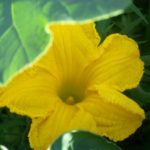Greetings at the New Moon – November 13, 2023

The phrase “the map is not the territory” is attributed to philosopher and scientist Alfred Korzybski. Basically, it means that a map can never completely represent all aspects of a space. If it did so, it would just be the place itself. (Korzybski elaborates on the concept in his book Science and Sanity .)
 This concept is easy to grasp when we are talking about a map of the physical world. For example, a map of our home garden, a hiking trail, or the Denver Botanic Gardens cannot show every brick on the path, every small plant, or every soil organism. That would make the map as big as the territory itself and wouldn’t really serve any purpose.
This concept is easy to grasp when we are talking about a map of the physical world. For example, a map of our home garden, a hiking trail, or the Denver Botanic Gardens cannot show every brick on the path, every small plant, or every soil organism. That would make the map as big as the territory itself and wouldn’t really serve any purpose.
Cognitive Maps
But we also have cognitive maps or models of the world. Cognitive maps include ideas and theories about how the world works or how it should. And with these models, people often forget that the map is not the territory. Examples include ideas about: best methods of growing food, what constitutes fairness, traits of a good person, and who are the good guys in a situation. At their best these maps provide  guidance and shine a light on how things work (or could work), but they are never complete. And at their worst they may influence our thoughts in a negative way.
guidance and shine a light on how things work (or could work), but they are never complete. And at their worst they may influence our thoughts in a negative way.
For example, maps of the world about growing food include organic gardening, permaculture, and regenerative agriculture. They all provide models for growing more food in a healthy way. There are alternate models of the world that say we can best feed everyone by saturating the soil with chemical fertilizers and dousing plants with lots of pesticides. We might ask ourselves how mapmakers can look at the world and create such drastically different maps.
 One reason is that each mapmaker has a world view that precedes and influences their mapmaking. A map maker who chooses to promote chemical agriculture might believe it is impossible to grow enough food organically. They may have a sincere desire to provide the most food to the world. (Of course, more pessimistically, the map maker might also be seeking ways to sell lots of chemical fertilizer.)
One reason is that each mapmaker has a world view that precedes and influences their mapmaking. A map maker who chooses to promote chemical agriculture might believe it is impossible to grow enough food organically. They may have a sincere desire to provide the most food to the world. (Of course, more pessimistically, the map maker might also be seeking ways to sell lots of chemical fertilizer.)
The Good and the Bad of Cognitive Maps
 There are many problems with chemical agriculture. Pesticides are a health risk for farm workers and people living nearby. Run off from pesticides pollutes ground water and streams. Chemical fertilizers and pesticides harm soil organisims and beneficial insects. The map makers of chemical agriculture ignore those aspects of the territory or maybe cannot see them at all as they are deemed unimportant. In the short run, lots of chemicals and pesticides may increase crops and so the map of the world seems to be working. But the map maker has forgotten the map is not the territory.
There are many problems with chemical agriculture. Pesticides are a health risk for farm workers and people living nearby. Run off from pesticides pollutes ground water and streams. Chemical fertilizers and pesticides harm soil organisims and beneficial insects. The map makers of chemical agriculture ignore those aspects of the territory or maybe cannot see them at all as they are deemed unimportant. In the short run, lots of chemicals and pesticides may increase crops and so the map of the world seems to be working. But the map maker has forgotten the map is not the territory.
This is just one example focusing on food production, but cognitive maps are everywhere. As we grow up in a culture, ideas about how the world works are just part of the package. And cognitive maps can be a great tool for making sense of the world. They create a shorthand for understanding difficult concepts. We simply need to remember that our maps are only a part of reality and also reflect a particular perspective.
 Mindfulness Applied to Maps & World Views
Mindfulness Applied to Maps & World Views
Mindfulness practice embraces the idea of seeing the world with fresh eyes. We can regularly check in with ourselves to question the accuracy of the models we are operating with. However we should acknowledge that shifting our mental maps of the world can be challenging for many reasons. It can be hard to see and think outside our culturally prescribed maps, and it can be emotional as well. People can be very attached to their particular ideas about how the world should work.
One step to intentionally exploring our maps is reading and listening to those with different maps. Taking in their information, we can decide how it fits with our own values and if it contributes to better understanding. When we find new models that are helpful we can adjust our own maps.
It is always a good idea to ask ourselves what might be missing from a particular map and why – whether it is our own map of the world or someone else’s. We may not like someone else’s model of the world, but it can create more understanding when we stop and consider why their model exists.
As you explore your own maps of the world, remember:
- maps of how the world works can be valuable
- but maps are always incomplete
- every map maker has a perspective
- and the map is not the territory.

Lunar Blog Post Series

This post is part of my lunar blog series. Each full moon I write about one plant, many of them are plants featured in my book, Growing Mindful. Each new moon I write about a topic related to gardens, mindfulness, and spirituality. For more details and a list of past lunar blog posts, click here.



